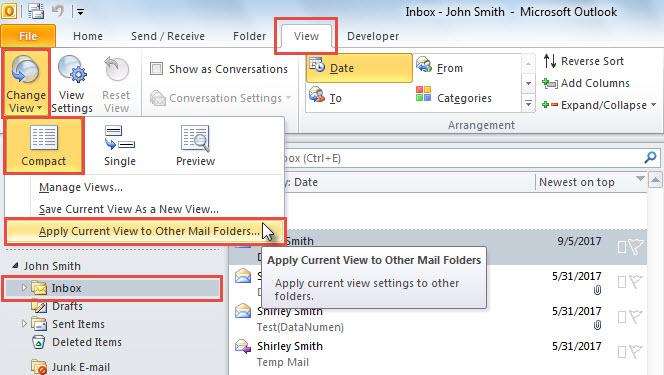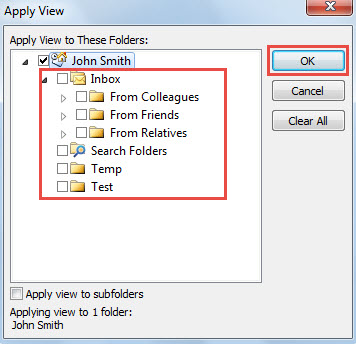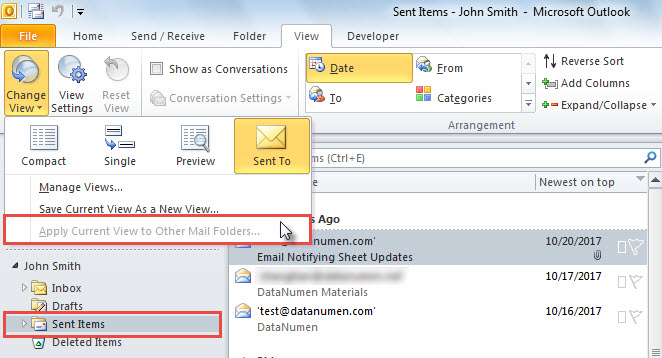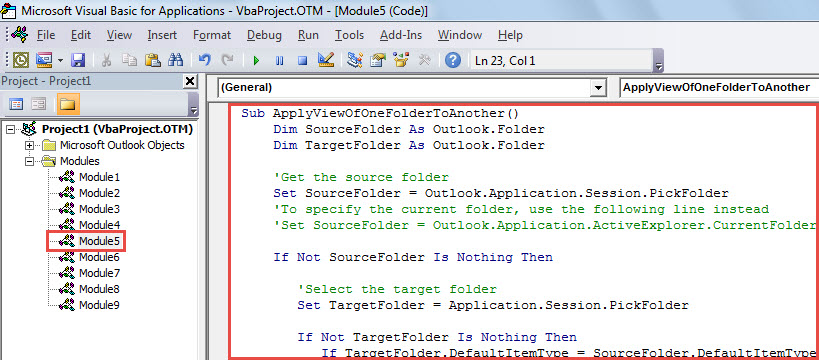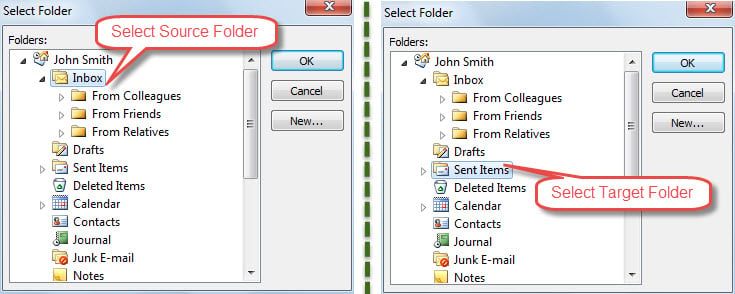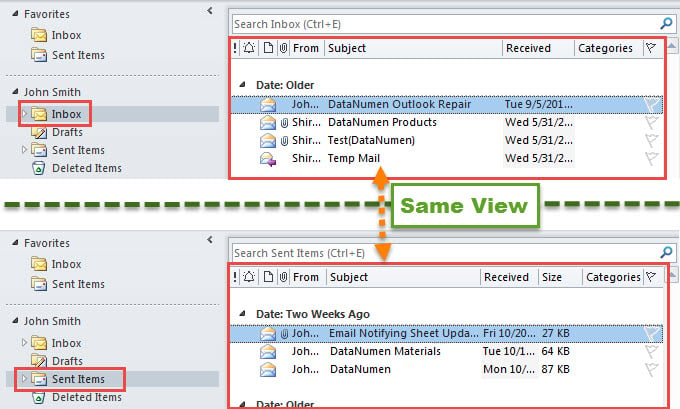Many users want to apply the view of one folder to another in Outlook. Looking at this requirement, this article will introduce 2 quick approaches to realize it.
Outlook permits users to customize the folder view. For instance, you can add a custom column to the item list at will. Now, if you’ve designed a folder view, you may hope to apply it to the other folders. So, thereinafter, we’ll share you 2 ways to achieve it. You can use either to your liking.

Method 1: Realize with Native Function
- At the very outset, launch your Outlook application.
- Then, pitch on a mail folder in the navigation pane, such as “Inbox” folder.
- Next, switch to “View” tab.
- Subsequently, click on the “Change View” button.
- From the drop down menu, find and select the “Apply Current View to Other Mail Folders”.
- In the popup dialog box, you can choose a target mail folder.
- Finally, click “OK” to save the changes.
Notes: This method has some shortcomings as follows:
- As you can see, you can’t apply the Inbox folder view to some folders, such as “Sent Items”, “Drafts”, “Deleted Items”, “Junk Email” folder.
- Also, when you select “Sent Items” folder or others, the “Apply Current View to Other Mail Folders” feature is greyed out, like the following image.
Thereby, in the followings, we will share you another method, which doesn’t have such flaws.
Method 2: Achieve with Outlook VBA
- To begin with, access Outlook VBA editor with reference to “How to Run VBA Code in Your Outlook”.
- Then, put the following VBA code into a module.
Sub ApplyViewOfOneFolderToAnother()
Dim SourceFolder As Outlook.Folder
Dim TargetFolder As Outlook.Folder
'Get the source folder
Set SourceFolder = Outlook.Application.Session.PickFolder
'To specify the current folder, use the following line instead
'Set SourceFolder = Outlook.Application.ActiveExplorer.CurrentFolder
If Not SourceFolder Is Nothing Then
'Select the target folder
Set TargetFolder = Application.Session.PickFolder
If Not TargetFolder Is Nothing Then
If TargetFolder.DefaultItemType = SourceFolder.DefaultItemType Then
'Copy the View Settings from source folder to the target
With TargetFolder.CurrentView
.XML = SourceFolder.CurrentView.XML
.Save
End With
Else
MsgBox "Source and target folder should be in the same type.", vbExclamation + vbOKOnly
End If
End If
End If
End Sub
- Lastly, press “F5” to run this macro.
- After that, you will be demanded to select the source and target folder, such as “Inbox” and “Sent Items”.
- When macro completes, you’ll see that the views of “Inbox” and “Sent Items” have been the same, like the screenshot below:
What if Encountering Outlook Corruption
In the event of Outlook damage, generally, what should you do then? More often than not, you can firstly take aid of the inbox repair tool to try repairing corrupt Outlook file. If the utility fails unfortunately, you have no choice but to resort to a potent external tool, such as DataNumen Outlook Repair.
Author Introduction:
Shirley Zhang is a data recovery expert in DataNumen, Inc., which is the world leader in data recovery technologies, including recover Sql Server and outlook repair software products. For more information visit www.datanumen.com
